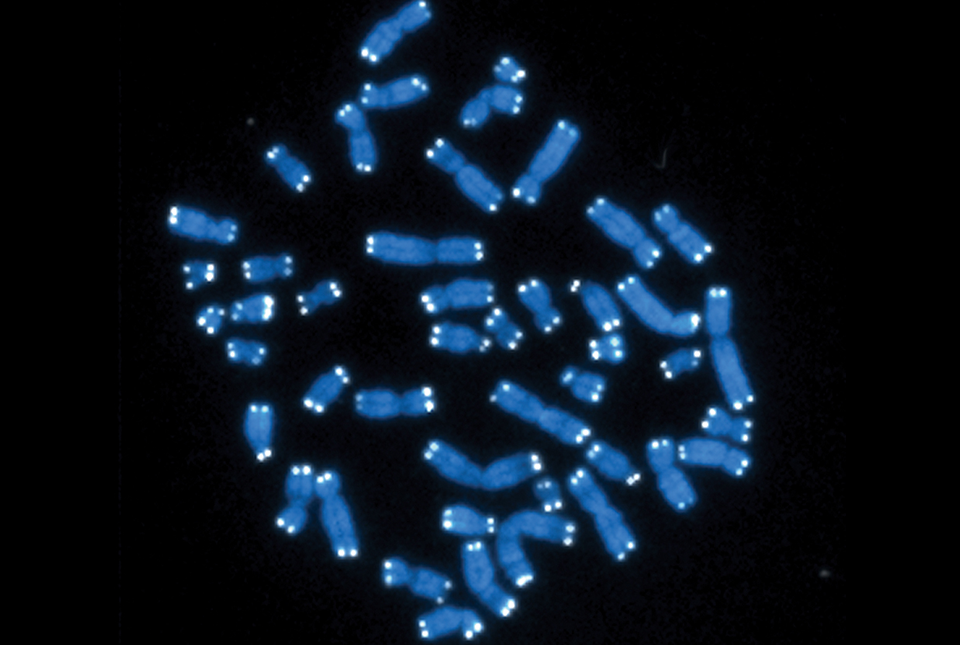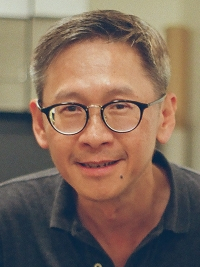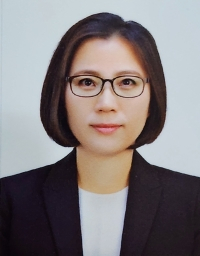
A new study from Weill Cornell Medicine provides insights into how cells maintain the tiny end caps of chromosomes as they divide, a key process in keeping cells healthy. Using yeast, the researchers reveal protein interactions that could explain how the enzyme telomerase is tightly regulated to prevent cells from dividing uncontrollably or aging prematurely. The preclinical study, published April 17 in Nucleic Acids Research, brings us closer to understanding the mechanisms behind aging and cancer.

Dr. Neal Lue
Before cells divide, they replicate the double-stranded DNA of each chromosome. The replication machinery does a good job of copying the nucleotide sequences until it gets to the telomeres, the end caps of chromosomes that safeguard the genetic material from damage and normally shorten with aging. That’s when telomerase steps in and produces an overhang in which one DNA strand is a little longer than the other. The cell uses a process called fill-in synthesis to complete the shorter strand. But if that doesn’t happen properly, repair enzymes could mistake the structure for a break that needs to be fixed, which could lead to cell death.
The researchers focused on the three-protein CST complex and the DNA polymerase α/primase (PP) complex, which are important for the proper upkeep of telomeres. “We found that DNA polymerase α is recruited to chromosome ends and forms an assembly with the CST complex. This both regulates telomerase activity and protects chromosome ends from damaging repairs,” said senior author Dr. Neal Lue, professor of microbiology and immunology member of the Sandra and Edward Meyer Cancer Center at Weill Cornell Medicine.
First authors Eun Young Yu, assistant professor of research in microbiology and immunology at Weill Cornell Medicine, and Kimberly Calugaru, research technician in the Lue lab, also co-led this research to unravel how these proteins work together.
Contacts Matter
A simpler organism, yeast allow researchers to isolate and study fundamental cellular processes that are also present in humans. In earlier work, Dr. Lue and his team purified the CST and PP proteins from the yeast Candida glabrata and showed that CST stimulates polymerase α activity in the test tube. But how the proteins interacted was a mystery.
When a structure was reported that depicts human CST in contact with PP, Dr. Lue and his colleagues worked with collaborators at the Spanish National Cancer Research Centre to show computationally that the yeast protein complexes formed a similar structure to the human complexes.

Dr. Eun Young Yu
The researchers were then able to introduce mutations that abolished CST-PP interactions to see what would happen. They observed two different outcomes in the yeast without CST and PP working properly together. In some mutants, the telomeres grew longer without DNA damage. “Our data suggest that bringing in the CST-PP complex is a critical step in terminating telomerase activity,” said Dr. Lue. “Interestingly, we don’t just see the leading strand growing—complementary fill-in synthesis is still happening so both strands are growing.” These mutants may have a minor defect and are not as efficient at stopping telomerase as wild-type proteins.
In other mutants, the cells grew slowly, and the telomeres experienced more severe consequences. Some telomeres were long while others were short, and they accumulated single-stranded DNA overhangs. “We don’t think the loss of fill-in synthesis activity is the only reason for the telomere abnormalities,” Dr. Lue explained. “We think that when you disrupt the CST-PP complex, as with these mutants, the telomeres become accessible to DNA repair factors, which causes many different problems with the telomeres.” Dr. Yu agreed and added, “Our study provided the first in vivo evidence that PP is not only making DNA at telomeres, but also protecting them.”
Potential Therapeutic Target
The new insights could help researchers better understand telomere biology disorders, such as Coats plus syndrome in which patients age prematurely and have some eye and bone damage. In normal cells, telomeres shorten as people age because replication does not proceed efficiently near the ends of the chromosomes. However, Coats plus patients have shorter telomeres than expected for their ages, and some of these patients harbor mutations in CST, which Dr. Lue surmises could disrupt the CST-PP interaction.
“Mutations that upregulate telomerase activity are common in all types of cancers,” said Dr. Lue. “In order for cancer cells to proliferate indefinitely, they need to activate telomerase to lengthen short telomeres.” Thus, altering CST protein activity with drugs could inhibit cancer cell growth by changing the lengths or protection status of telomeres. Targeting CST proteins also could help patients overcome resistance to some cancer medications.
Many Weill Cornell Medicine physicians and scientists maintain relationships and collaborate with external organizations to foster scientific innovation and provide expert guidance. The institution makes these disclosures public to ensure transparency. For this information, please see the profile for Dr. Neal Lue.
This work was supported by the National Science Foundation through grant number MCB-1817331, the National Institutes of Health through grant number GM107287, a Boehringer Ingelheim Fonds Ph.D. fellowship, the Agencia Estatal de Investigación through grant number AEI / 10.13039 / 501100011 033, the Ministerio de Ciencia e Innovación through grant number PID2020-114429RB-I00, and the National Institute of Health Carlos III.
